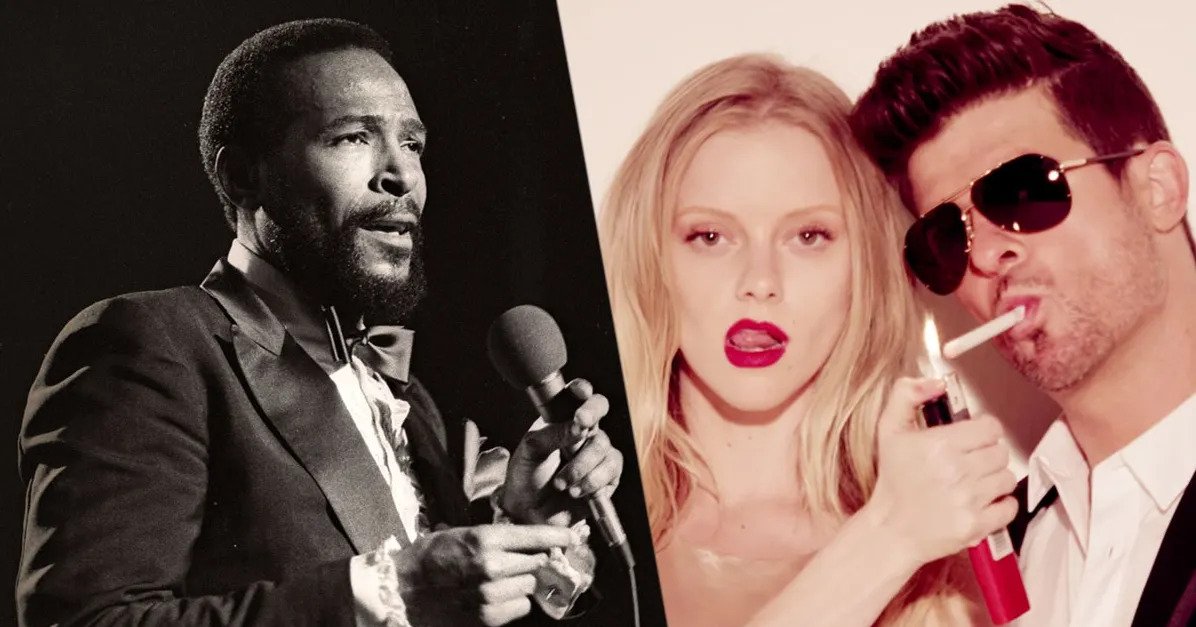Copyright Infringement in Pop Music
All music lovers know the feeling of déjà vu when listening to a new song – when we’re absolutely sure we’ve heard the song before, even if we’re listening to something for the very first time. Just like any other artists, musicians are continually inspired by each other’s work, using it as an inspiration to fuel their own creativity. But as some of the major copyright lawsuits in the past ten years have shown, there is a fine line between inspiration and plagiarism. And it’s proven to be quite difficult to pinpoint where that specific line is.
Copyright infringement is a major issue in the music industry, and as a music clearance agency, it’s something we deal with regularly. Primarily, in trying to prevent it by obtaining the correct licenses for our clients. In this blog post, we’ll take a closer look at the topic of copyright infringement in music, and what it means for artists, producers, and professionals in the creative industries.
Legal Battles
Last year, Dua Lipa was hit with a copyright infringement lawsuit for her hit “Levitating.” Florida band Artikal Sound System claimed that the Future Nostalgia track is plagiarizing their 2017 song “Live Your Life.” The songs do sound strikingly similar, sharing almost identical melodies and chord progressions. Later, a similar lawsuit was filed against Dua Lipa and Levitating for similarities with the 1979 hit ‘Wiggle and Giggle All Night’. And while much less immediately obvious than ‘Live Your Life’, the verses of Levitating and Wiggle and Giggle All Night definitely have a shared cadence in the verse. Lipa’s legal team is currently attempting to get the case dismissed, calling the accusation vague and ‘devoid of a shred of actual detail’. As of this moment, the case is ongoing.
The ‘Levitating’ case is the latest in a series of legal battles between among artists and songwriters – over the past decade we have seen similar cases between Marvin Gaye and Robin Thicke (over the 2013 hit Blurred Lines), Katy Perry and Christian rapper Flames (over Perry’s 2013 hit Dark Horse) and Paramore vs Olivia Rodrigo (which resulted in Paramore receiving songwriting credit on good 4 u). Some successful for the initiators, some less. In the case of ‘Blurred Lines’ the court ruled in favor of the Gaye estate, ordering Thicke and Williams to pay them a sum just short of five million dollars. A similar ruling took place in the Flames vs Katy Perry case, however this case was later reversed. A case between Ed Sheeran and the Gaye estate over Sheeran’s hit ‘Thinking Out Loud’ (2014) is still ongoing, and has been for several years.
Causes?
One of the most challenging aspects of music copyright law is the subjective nature of determining whether or not infringement has occurred. Cases are often decided by “the average listener, who is not an educated musicologist or musician.” (Rolling Stone) This lack of understanding can lead to confusion about what is permissible and what’s not. Labels are increasingly cautious, and many are seeking expert advice to double-check new songs before they’re even considered for release.
The issue of copyright infringement is further complicated by the growing accessibility of music-production software, which offers the same features to every user. This has led to a rise in similar sounds and styles, making it more challenging to create original music without unintentionally borrowing from existing works. However, as music intellectual-property attorney Wesley Lewis notes, there is still a need for clarity on the question of “at what point is an element of creative expression protectable?”
Some common, logical parameters to look for when determining whether copyright has been infringed are a song’s melody, lyrics, and underlying chord structure. But you also have to take into account the instrumentation, playing style and (as shown in the Blurred Lines case) the “feel” of a song. Forensic musicologist Joe Bennett observes that: “What makes a song special is not its chords, or its top-line melody, or its lyrics, or its feel. It is how it combines all those elements.” “Listeners don’t hear songs as simple linear sequences of pitches – they hear everything all at once, and it’s that combination of elements that produces the powerful emotional response that we find so intoxicating”.
A video comparing 'Levitating' and Live Your Life'. Source: YouTube, user ALMASHUPS
Art Begets Art
Ultimately, art is not created in a vacuum. Of course, some instances of “inspiration” are more obviously close to their inspiration source than others, but the statement stands: Art begets art.
As music clearance specialists, we work with artists and producers to ensure that their work is protected and cleared for use in various media. By fostering a culture of respect for intellectual property and creative expression, we can continue to inspire and enrich our lives through music.
Take a listen to any songs from the cases listed above – do you think they are plagiarized?
Musicican and YouTuber Adam Neely commenting on the 'Levitating' case. Source: YouTube, user Adam Neely
Do you want to know more about how to avoid copyright infringement or how to license existing music for media? Reach to us via the button below

